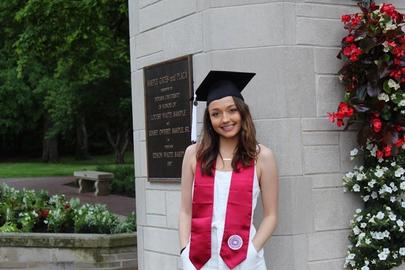- About Us
- Advertise / Support
- Editorial Board
- Contact Us
- CancerNetwork.com
- TargetedOnc.com
- OncLive.com
- OncNursingNews.com
- Terms & Conditions
- Privacy
- Do Not Sell My Information
- Washington My Health My Data
© 2025 MJH Life Sciences™ and CURE - Oncology & Cancer News for Patients & Caregivers. All rights reserved.
Photoimmunotherapy Trial Begins in Certain Patients With Head and Neck, and Skin Cancer

Jamie Cesanek, Assistant Web Editor for CURE®, joined the team in March 2021. She graduated from Indiana University Bloomington, where she studied journalism and minored in sociology and French. In her free time, she enjoys hiking, running, or enjoying time with friends and family. Email her at jcesanek@curetoday.com.
The goal of the phase 2 trial is to study the safety and efficacy of ASP-1929, a photoimmunotherapy with fluorescence imaging, in patients with head and neck or skin cancer.
A phase 2 clinical trial has begun to analyze ASP-1929 photoimmunotherapy plus fluorescence imaging in patients with operable primary or recurrent head and neck squamous cell carcinoma (HNSCC) or cutaneous squamous cell carcinoma (cuSCC), which is the second most common form of skin cancer.
Photoimmunotherapy treatment combines photodynamic therapy of a tumor with immunotherapy. The process of combining the two may enhance responses in metastatic cancer.
The trial is being piloted under the Cooperative Research and Development Agreements with the National Cancer Institute. Researchers plan to assess the efficacy and safety of ASP-1929 photoimmunotherapy treatment in 22 patients, given before the standard of care, tumor resection.
Researchers also intend to determine the viability of the Shimadzu fluorescence imaging system for real-time monitoring and recording of fluorescence of the IRDye 700DX portion of ASP-1929. IRDye 700DX is a light-activatable dye, while ASP-1929 is an antibody-dye conjugate with Erbitux (cetuximab). The conjugate works by binding to epidermal growth factor receptor (EGFR) — a cancer antigen expressed in multiple types of solid tumors — and then being locally activated by non-thermal red light illumination given from a laser device system.
In pre-clinical data, the technology proved to lead to cancer cell death and tumor necrosis.
“Currently, we are conducting monotherapy clinical trials with ASP-1929 photoimmunotherapy and a combination therapy trial with anti-PD1 in patients with unresectable recurrent HNSCC and cuSCC,” said Mickey Mikitani, Chief Executive Officer of Rakuten Medical, Inc., in a news release. “This clinical trial further expands the studied patient groups by targeting primary operable HNSCC or cuSCC. I hope the results of this trial will lead to Rakuten Medical's photoimmunotherapy treatment reaching as many patients as possible.”
The fluorescence imaging system for photoimmunotherapy treatment is being developed by Shimadzu in partnership with Rakuten Medical. The hope is that it will help visualize the condition of a patient’s tumor and eventually be used to be given to all patients, including those with early-stage cancers.
The main goal of the trial is to determine pathologic tumor response after 24 months. Additional secondary goals include progression-free survival (time until disease progresses) and overall survival (time from treatment to death by any cause) for the same 24-month time frame.
The researchers plan to dose patients with a combination of ASP-1929 and photoimmunotherapy. During the illumination procedure, they plan to image fluorescence of the IR700 of ASP-1929, using a Shimadzu Fluorescence Imaging System camera. Approximately 15 days later, patients are expected to undergo the standard of care surgery.
The Center for Cancer Research in Bethesda, Maryland, is currently recruiting patients for the trial. Patients may be ineligible for a number of reasons, including any condition which makes them unsuitable for illumination exposure or ASP-1929.
For more news on cancer updates, research and education, don’t forget to subscribe to CURE®’s newsletters here.
Related Content:



